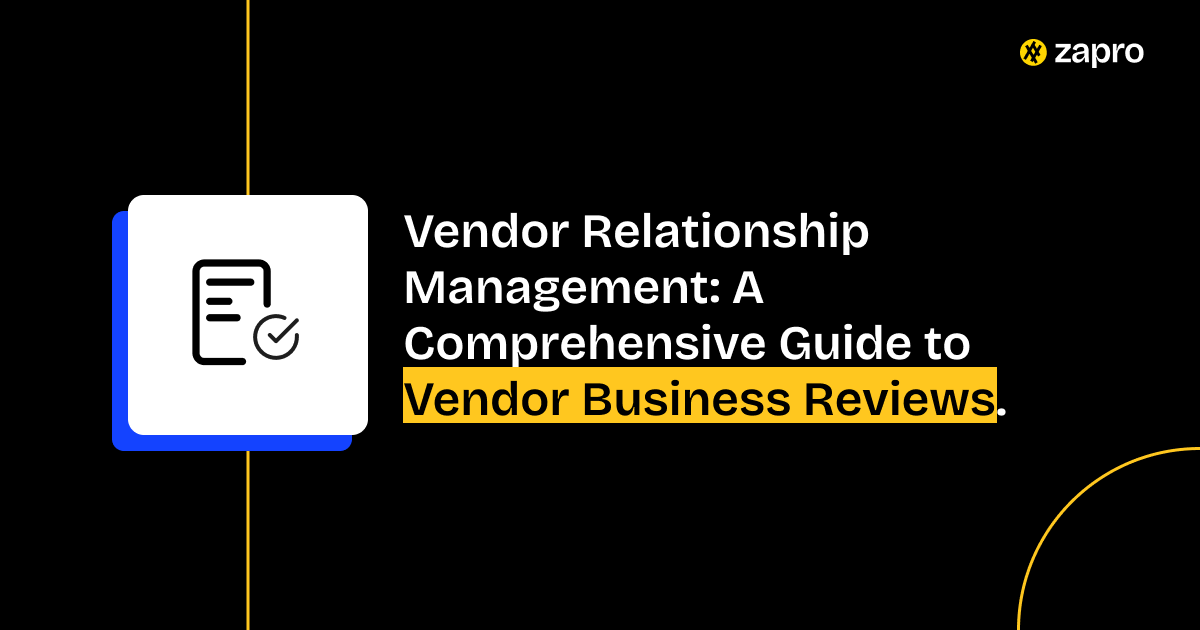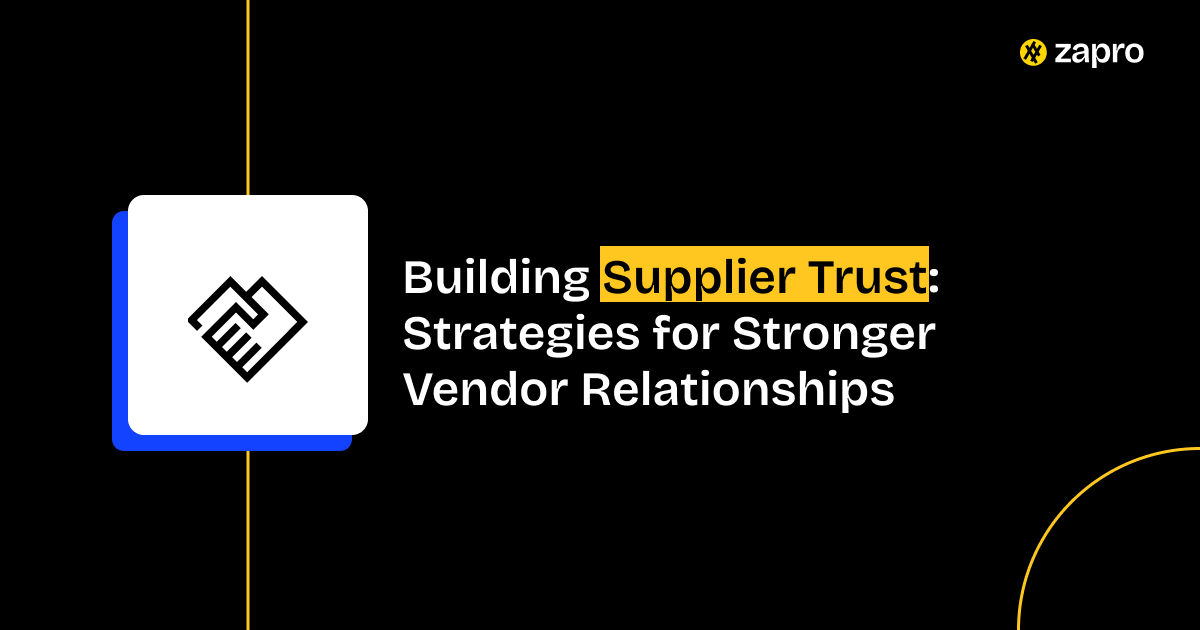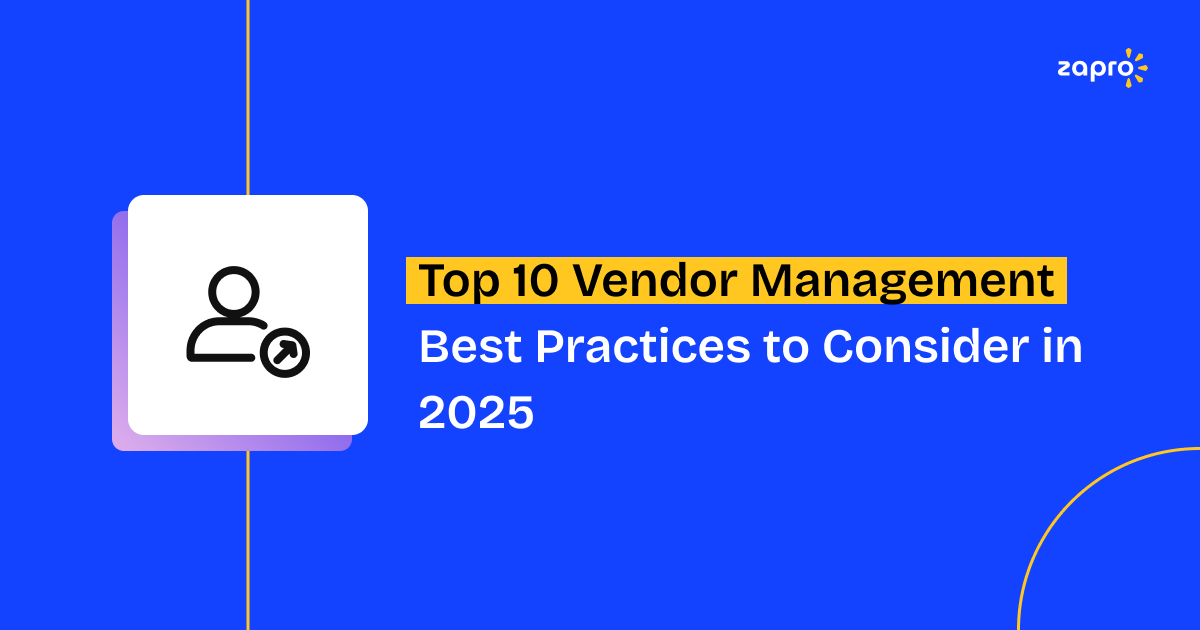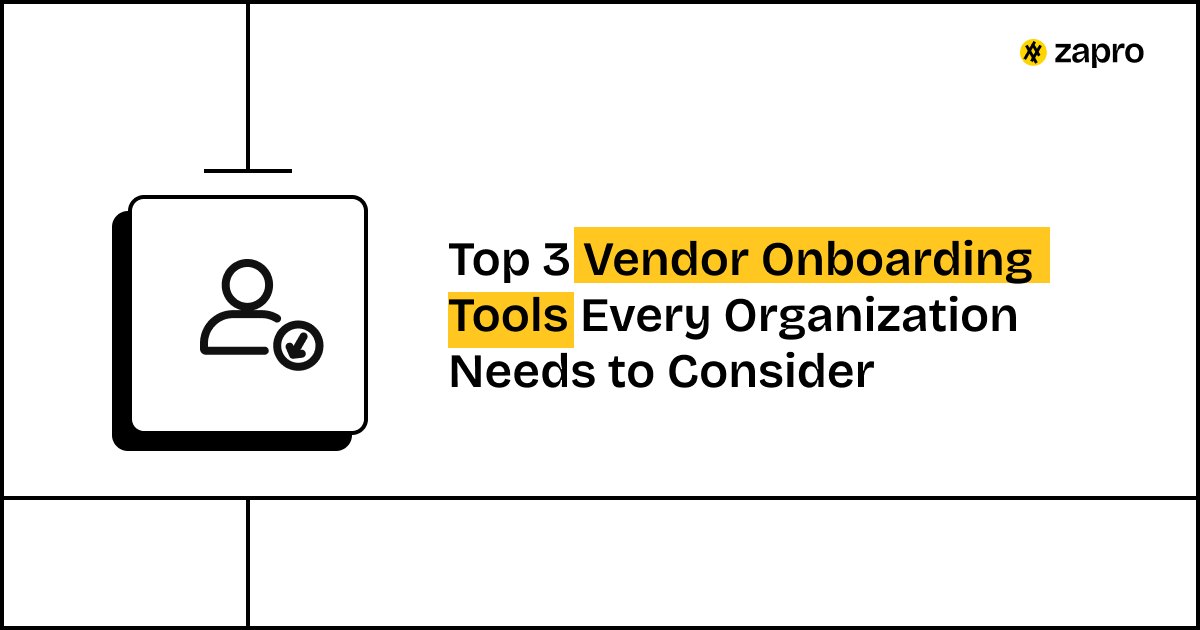Key suppliers form the bloodline of your business; checking on them periodically has many advantages. However, if you are going on with unplanned check-ins to manage your key suppliers, you are missing out on something big. The casual visits or other forms of check-ins are a big drawback. What you need are structured, strategic sessions: vendor business reviews.
The reviews that are conducted are crucial as they throw insights and bind the alliances for the years to come. When the approach is right, it creates a sense of bonding and genuinely paves the path to partnership building. It opens the options to continuous improvement, rapid growth, and effortlessly aligning objectives side by side with your vendors.
In this insightful post, we provide you with the detailed framework you need to master the art of the Quarterly Business Review (QBR) and the Strategic Business Review (SBR).
The Strategic Imperative of Regular Vendor Business Reviews
Moving Beyond Ad Hoc Meetings to Structured Dialogue
When the communication is not up to the mark, or if it is less, it often leads to the biggest inadequacies in vendor management. Small catch-ups help discuss matters that need immediate assistance, such as the late invoice or the current crisis. These ad-hoc discussions lack the bigger picture of the road map and milestones covered, and end when the issues are addressed.
A formal relationship review framework ensures that both the line items are discussed and there is clarity between the parties. It merely shifts from reporting to strategy and more. This dedicated time signals to your partner that their performance and future are outstanding priorities for your executive team.

Organizations that conduct structured quarterly business reviews with strategic suppliers achieve 15-20% better contract compliance and realize 12% more value from those relationships.
– Gartner, Best Practices in Supplier Relationship Management
Benefits: Alignment, Improvement, and Relationship Growth
Conducting regular, well-planned supplier performance meetings delivers fantastic results:
- Alignment: Helps to stay on the same page by discussing the long-term goals and adhering to the same strategic plan.
- Continuous Improvement: This plans out the time, teams or the number of persons required to attend to the unanticipated issues to guarantee continuous improvement.
- Relationship Growth: The best approach to address issues is the joint approach. When problems are approached as a team, it helps the relationships to grow and sustain for a longer time.
Learn about contract management.
Differentiating QBRs (Quarterly Business Reviews) and SBRs (Strategic Business Reviews)
Not all vendor business reviews are created equal. The most successful teams tailor the format based on the vendor’s criticality and the required depth of discussion.
Scope, Frequency, and Attendees for Each Type
| Frequency | Quarterly (4 times a year) | Annually or Bi-Annually (1-2 times a year) |
| Scope | Tactical and Operational performance (KPIs, SLAs, current projects, resource allocation). | Strategic alignment, market trends, future investment, innovation pipeline, risk mitigation. |
| Attendees | Vendor Relationship Manager, Project Leads, Operational Stakeholders. | CPO/Director Level, Executive Sponsor, Vendor Leadership (CEO/VP Sales), Risk/Legal Leads. |
| Goal | Corrective action and performance optimization. | Relationship continuity and mutual rapid growth. |
When to Conduct Which Review
In order to have clarity and understand the hiccups in the system, it is important to have the quarterly business review with suppliers frequently. This provides major real-time insight into operational performance. These sessions are about the how and the what of the last three months.
Similarly, the strategic business review vendors are for your most critical, Tier 1 partners. This meet-up is high-level between the two parties, which throws light into five years out, not three months back. It helps to match the pace and work toward the goals in sync.
Stop Wasting Hours Preparing for Vendor Reviews

Planning Your Vendor Business Review: Key Preparations
Prepare to deliver the best because that constitutes 80% of your efforts. When things are drafted perfectly, consider the rest is going to fall in its place without any slipups.
Defining Objectives and Agenda Items
Never send a mere list of topics. Define three clear, measurable objectives for the meeting. For a QBR, the objective might be: “Agree on the root cause and corrective action plan for the last two delivery delays.” For an SBR: “Identify three potential joint innovation projects for the coming year.”
Data Collection and Performance Reporting (Both Sides)
Data should be collected effortlessly without any delay from a centralized platform. Focus on the most crucial supplier performance metrics. Furthermore, ask the vendor to prepare their own performance data and self-assessment side by side with yours. This prevents one-sided reporting and fosters transparent vendor interactions.
Pre-Meeting Communication and Information Sharing
Do not send anything in the last minute except for the gentle reminders; make sure the agenda is sent at least one week in advance. By doing so, you allow the vendor to come up with in-depth details pertaining to the agenda of the meeting; otherwise, it might lead to a trail of follow-ups. This approach is hassle-free and saves a lot of time during the meeting itself.
Selecting the Right Internal and External Participants
Ensure every participant has their part to do. If you are discussing IT integration, the IT Director must attend. If you are discussing a five-year strategy, the CEO of the vendor must attend. A junior attendee for a strategic business review of vendors signals a low priority, which can jeopardize the partnership.
Learn about vendor relationship management.
Conducting an Effective Vendor Business Review
The goal is collaboration, not conflict.
Setting the Tone: Collaborative, Not Confrontational
In general, a meeting starts by welcoming all, and in this case, all the vendor teams should be greeted and appreciated for their commitment and achievements, which reaffirms the faith in your organization. Centered around the topic of continuous improvement. The attitude should be “How do we solve this?” not “Why did you fail?” This sets the stage for genuine hand-in-hand problem-solving.
Reviewing Performance Against KPIs and SLAs
Use objective data without any delay. Effectively review the quarterly business review suppliers’ metrics. Highlight successes first, subsequently moving into areas requiring improvement. Apparently, having the data visualized effortlessly helps avoid arguments.
Discussing Challenges and Root Cause Analysis
For any underperformance, dedicate time to finding the root cause. This requires looking at many facets of the issue. Is it the vendor’s capacity, or are your internal inadequacies (slow approvals, vague instructions) contributing to the problem?
Exploring Opportunities for Innovation and Growth
Dedicate at least 30% of the time to the future. Ask the vendor: “What fantastic ideas do you have for us? How can we help you take off?” This turns a retrospective meeting into a proactive, advantageously focused session.
Action Planning and Accountability Assignment
No discussion should end without a clear action item. Every item must be assigned an owner (internal or vendor) and a firm deadline. This follow-up step is crucial for effective continuous improvement.
Best Practices for Facilitation and Engagement
Let the meeting flow in its natural style, which is easy for everyone to comprehend. Do away with the one-person monologues. Ensure that all participants contribute and that the discussion doesn’t spiral into bizarre or irrelevant details.
Learn about vendor management software.
Post-Review: Driving Action and Follow Through
The real work starts after the meeting ends.
Documenting Outcomes and Action Items
A dedicated platform should be used to log all discussion points and final decisions. This ensures that every stakeholder can comprehend the commitments made.
Assigning Owners and Deadlines
Transfer the agreed-upon action items, complete with owners and due dates, into a shared tracking system without any delay. This moves commitments from conversation into a verifiable process.
Tracking Progress and Ensuring Accountability
The Relationship Manager’s role is to follow up on progress. Schedule a brief follow-up checkpoint dedicated solely to reviewing the action tracker. This clarity plays a major role in igniting the reinforcing accountability established during the meeting.
Communicating Outcomes to Relevant Stakeholders
All decisions and plans of action for the quarter or the year should be made with internal executives and relevant teams. This ensures internal groups adhere to the commitments made to the vendor.
Leveraging Technology for Seamless Business Reviews
Spreadsheets are the enemy of effective strategic business review vendors. Technology must enable hassle-free execution.
Centralized Performance Dashboards
A single pane of glass dashboard is crucial. It pulls together all vendor business review metrics effortlessly: SLAs, contract compliance, follow-up action status, and financial performance. This eliminates painstaking manual data aggregation.
Automated Reporting and Analytics
The system should automatically generate the core reports needed for the quarterly business review of suppliers. This frees up your analysts to focus on interpreting the data rather than collecting it, providing an advantageous use of time.
Shared Action Item Trackers and Collaboration Tools
Using a shared, collaborative tool ensures that both the vendor and your team are looking at the same action item list, eliminating the bizarre dangers of differing spreadsheets. This simplifies the follow-up process in a breeze.
Common Pitfalls to Avoid in Vendor Business Reviews
Here are a few things that you need to be prompt in completing that may hinder the productivity of the meeting.
Lack of Preparation, No Clear Agenda, Too Tactical vs. Strategic
Failing to define clear objectives is the biggest pitfall. If the meeting devolves into discussing yesterday’s invoice, you’ve wasted a rare opportunity for a strategic business review vendors.
One Sided Reporting, Failure to Follow Up
Only presenting your data makes the session feel confrontational, not collaborative. Furthermore, not tracking action items means the incredible energy and commitments made during the meeting simply evaporate. The follow-up is the most important role in the entire process.
Conclusion: Business Reviews as Relationship Accelerators
Structured vendor business reviews are far more than administrative overhead. They are the deliberate, crucial mechanism for converting a contractual relationship into a fantastic partnership.
By implementing a painstakingly defined relationship review framework and leveraging technology to make the process hassle-free and data-driven, you ensure that every quarterly business review, suppliers, and strategic business review vendor session effectively accelerates improvement, minimizes hazards, and secures outstanding long-term vendor negotiation success.

Automate Your Vendor Reviews with Zapro
AI-powered QBR/SBR management. Real-time metrics. Effortless collaboration.
FAQ
1. What is the difference between a QBR and an SBR in vendor management?
A quarterly business review with suppliers (QBR) happens every three months and focuses on short-term performance metrics, immediate issues, and tactical improvements with your vendors. A strategic business review with vendors (SBR), on the other hand, typically occurs annually or semi-annually and takes a broader view of the partnership, covering long-term goals, innovation opportunities, and strategic alignment between both organizations. Think of QBRs as health check-ups while SBRs are comprehensive physical exams that look at the bigger picture of your vendor relationship. Pro tip: Platforms like Zapro automate performance tracking between reviews, making your vendor business reviews more data-driven and less time-consuming.
2. How do I prepare for my first vendor business review meeting?
Start by gathering at least 90 days of performance data including delivery times, quality metrics, cost trends, and any service issues for your supplier performance meetings. Create a simple agenda that covers what’s working well, areas needing improvement, and future goals. Involve stakeholders from both sides who actually work with the vendor daily—not just executives. Prepare 3-5 specific discussion points rather than trying to cover everything. Most importantly, approach it as a collaborative conversation, not a complaint session. Zapro simplifies this entire process by centralizing all vendor data, automatically generating performance reports, and even scheduling your quarterly business reviews with suppliers—so you walk into meetings fully prepared and confident.
3. What metrics should I track for effective vendor relationship management?
Focus on metrics that actually impact your business outcomes during your vendor business reviews. The essentials include on-time delivery rate, quality scores or defect rates, response time to issues, cost savings or budget adherence, and compliance with contract terms. But don’t stop at operational metrics—also track relationship health indicators like communication effectiveness, innovation contributions, and stakeholder satisfaction scores within your relationship review framework. The best vendor scorecards balance hard numbers with qualitative feedback because strong relationships require both performance excellence and human connection. Zapro’s AI-powered analytics automatically tracks these KPIs in real-time, giving you instant visibility into vendor performance without manual spreadsheet updates.
4. How often should I conduct vendor business reviews with my suppliers?
It depends on the vendor’s strategic importance and spend level. For critical or high-spend vendors (typically those representing 20% or more of category spend), conduct formal quarterly business reviews with suppliers plus an annual strategic business review. For mid-tier vendors, semi-annual supplier performance meetings usually suffice. Low-risk, low-spend vendors might only need annual check-ins or can be managed through automated scorecards. That said, informal touchpoints should happen much more frequently—weekly or monthly calls keep relationships warm and catch issues early before they become review-meeting problems. With Zapro, you can set up automated review schedules and receive alerts when it’s time for your next vendor business review, ensuring no critical supplier relationship falls through the cracks.
5. What should I do if my vendor consistently underperforms despite regular business reviews?
First, make sure you’ve clearly documented the performance gaps and discussed them in at least two consecutive supplier performance meetings with specific improvement deadlines using your relationship review framework. If issues persist, escalate to a formal Performance Improvement Plan (PIP) with measurable targets, weekly check-ins, and consequences for non-compliance. Simultaneously, begin contingency planning by identifying alternative vendors—not as a threat, but as responsible risk management. Sometimes underperformance stems from misaligned expectations or resource constraints on their end, so have an honest conversation during your strategic business review with vendors about whether the partnership still makes sense for both parties. Zapro’s vendor management platform makes tracking improvement plans effortless with automated milestone tracking, performance alerts, and comparative analytics across your entire supplier base—helping you make objective decisions about vendor relationships based on real data, not gut feelings.
Don’t miss our weekly updates
We’ll email you 1-3 times per week—and never share your information.
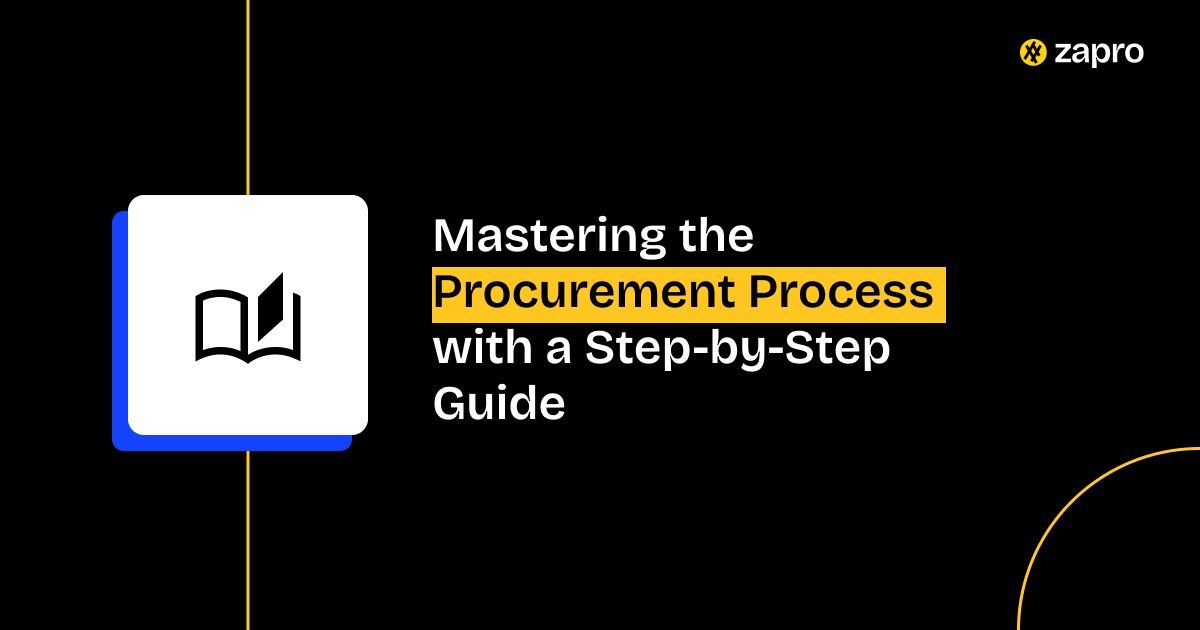
 Healthcare
Healthcare Financial Services
Financial Services Technology
Technology Venture Capitalist
Venture Capitalist Chief Procurement Officer
Chief Procurement Officer Chief Financial Officer
Chief Financial Officer
